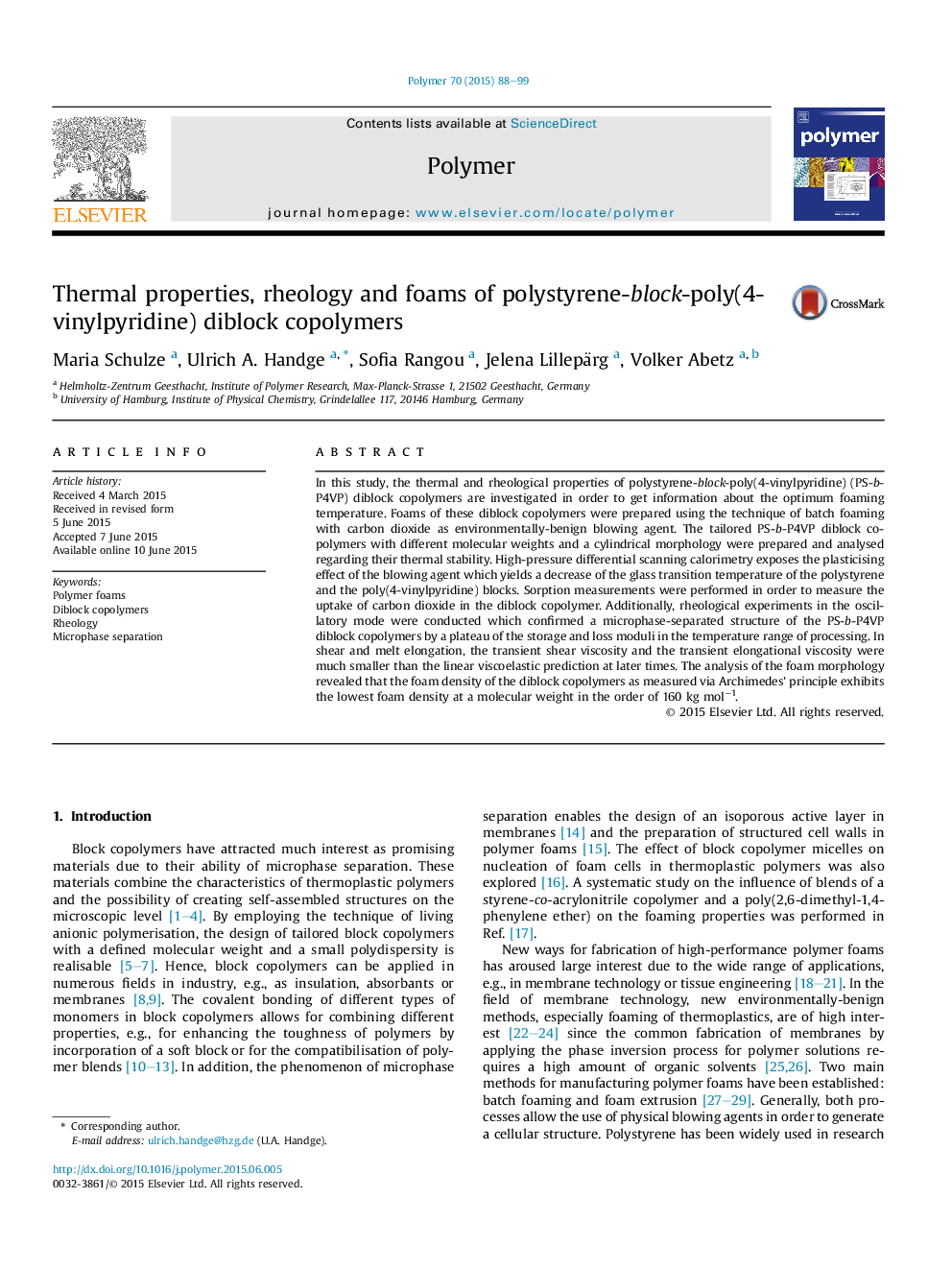| کد مقاله | کد نشریه | سال انتشار | مقاله انگلیسی | نسخه تمام متن |
|---|---|---|---|---|
| 5179934 | 1502536 | 2015 | 12 صفحه PDF | دانلود رایگان |
- Foaming of amphiphilic PS-b-P4VP diblock copolymers can yield a foam density in the order of 0.1Â g/cm3.
- The higher the molecular weight of the diblock copolymer the lower the foam density.
- A foaming temperature of 110 °C leads to the lowest foam density of the diblock copolymer foams.
- Loading of PS-b-P4VP diblock copolymers with CO2 leads to plasticisation of both blocks.
- The power-law exponent of the flow curve of PS-b-P4VP diblock copolymers depends on the molecular weight.
In this study, the thermal and rheological properties of polystyrene-block-poly(4-vinylpyridine) (PS-b-P4VP) diblock copolymers are investigated in order to get information about the optimum foaming temperature. Foams of these diblock copolymers were prepared using the technique of batch foaming with carbon dioxide as environmentally-benign blowing agent. The tailored PS-b-P4VP diblock copolymers with different molecular weights and a cylindrical morphology were prepared and analysed regarding their thermal stability. High-pressure differential scanning calorimetry exposes the plasticising effect of the blowing agent which yields a decrease of the glass transition temperature of the polystyrene and the poly(4-vinylpyridine) blocks. Sorption measurements were performed in order to measure the uptake of carbon dioxide in the diblock copolymer. Additionally, rheological experiments in the oscillatory mode were conducted which confirmed a microphase-separated structure of the PS-b-P4VP diblock copolymers by a plateau of the storage and loss moduli in the temperature range of processing. In shear and melt elongation, the transient shear viscosity and the transient elongational viscosity were much smaller than the linear viscoelastic prediction at later times. The analysis of the foam morphology revealed that the foam density of the diblock copolymers as measured via Archimedes' principle exhibits the lowest foam density at a molecular weight in the order of 160 kg molâ1.
399
Journal: Polymer - Volume 70, 23 July 2015, Pages 88-99
